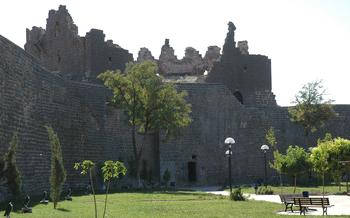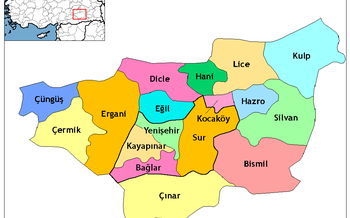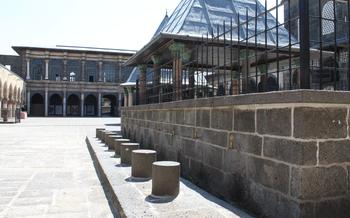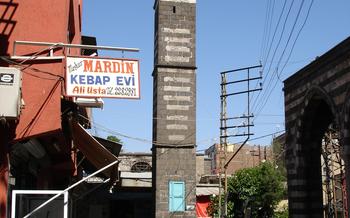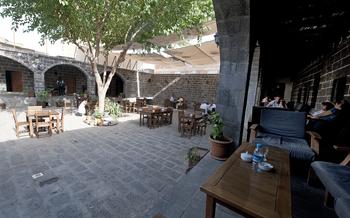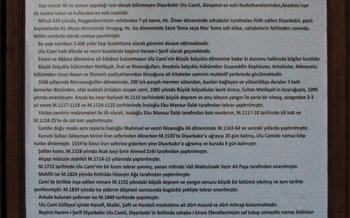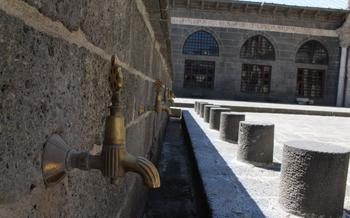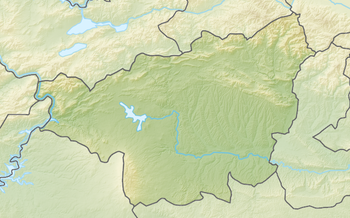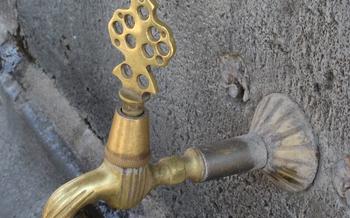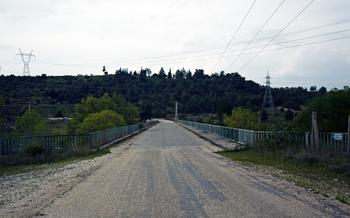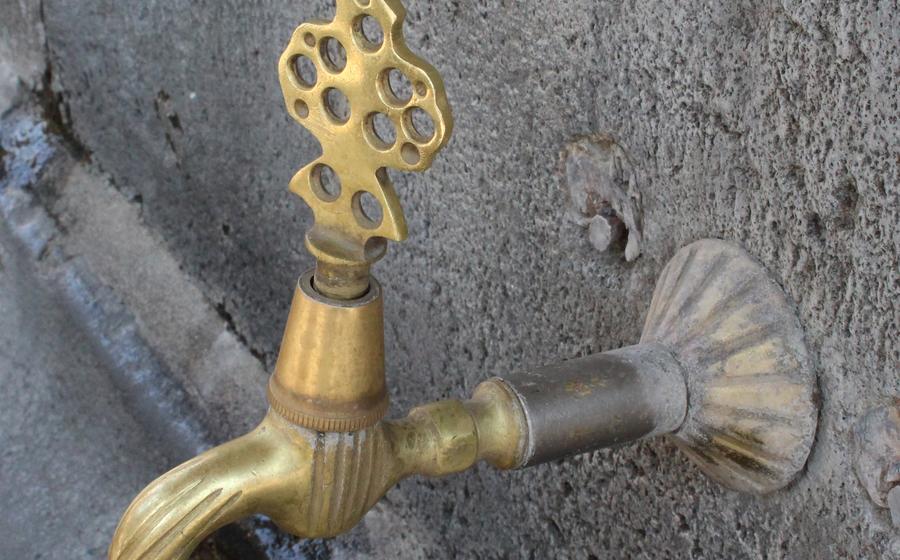
Diyarbakır Ethnography Museum
- Historical Background and Cultural Heritage
- Location and Accessibility
- Museum Hours and Admission Fees
- Exhibits and Collections
- Interactive Displays and Activities
- Cultural Performances and Events
- Museum Shop and Souvenirs
- Museum Cafeteria or Restaurant
- Accessibility for Visitors with Disabilities
- Photography and Videography Guidelines
- Guided Tours and Language Options
- Research and Educational Resources
- Community Involvement and Outreach
- Sustainability and Environmental Practices
- Insider Tip: Hidden Gems and Secret Spots
Historical Background and Cultural Heritage
The Diyarbakır Ethnography Museum stands that has been a melting pot of civilizations throughout history. Established in 1978, the museum is housed in a renovated historical building that once served as a prison. Its collection showcases the diverse cultural traditions of the region, including textiles, jewelry, pottery, and traditional costumes. The museum plays a crucial role in preserving and promoting the tangible and intangible cultural heritage of Diyarbakır, ensuring that future generations can appreciate and connect with the region's rich past.
Location and Accessibility
The Diyarbakır Ethnography Museum is conveniently situated in the heart of the city, within walking distance of many other historical landmarks and attractions. It is located at Ali Emiri Mahallesi, Gazi Caddesi, No:2, 21000 Sur/Diyarbakır, Turkey. To reach the museum, you can take advantage of the city's public transportation system. Several bus lines, including the 3, 10, and 11, stop within a short walking distance of the museum. If you prefer to drive, there is limited street parking available in the vicinity. Once you arrive, look for the museum's entrance, which is clearly marked with signage.
Insider Tip:
To avoid the hassle of finding street parking, consider arriving early in the morning or using a nearby parking garage. The museum is within easy walking distance of several other historical sites, such as the Diyarbakır Castle and the Great Mosque of Diyarbakır, making it convenient to combine your visit to the museum with a tour of these other landmarks.
Museum Hours and Admission Fees
The Diyarbakır Ethnography Museum welcomes visitors from all walks of life with open doors during specific hours. The museum observes a consistent schedule throughout the year, with slight variations during certain periods. Generally, the museum remains open from Tuesday to Sunday, allowing ample opportunities for exploration. On weekdays, the museum opens its doors from 9:00 AM to 5:00 PM, providing ample time for visitors to immerse themselves in the rich cultural heritage on display.
Admission fees are nominal, ensuring that everyone has the chance to experience the treasures within. Regular admission tickets for adults are priced at a reasonable rate, while children and students receive discounted rates, making it an affordable outing for families and educational groups.
Guided tours offer an enriching experience, providing visitors with in-depth insights and fascinating stories behind the exhibits. These tours are available at an additional cost and can be arranged in advance to ensure availability. Group discounts are also available for larger parties, making it an attractive option for organized excursions.
To avoid the hustle and bustle of peak visiting hours, it is advisable to plan your visit during the weekdays, particularly in the morning hours. This will allow you to have a more intimate and serene experience, with ample time to delve into the exhibits without feeling rushed.
Exhibits and Collections
The Diyarbakır Ethnography Museum houses a vast and diverse collection of artifacts, showcasing the rich cultural heritage of the region. The permanent exhibits take visitors on a journey through time, exploring the history, traditions, and way of life of the people who have called Diyarbakır home throughout the centuries. From ancient pottery and jewelry to traditional costumes and household items, each artifact tells a unique story about the region's past.
Among the highlights of the collection is a stunning array of traditional textiles, including intricately woven carpets, colorful kilims, and embroidered garments. These textiles showcase the exceptional craftsmanship and artistic skills of the local artisans. The museum also houses a collection of historic manuscripts, religious texts, and rare books, providing a glimpse into the intellectual and literary traditions of the region.
Thematic galleries within the museum focus on specific aspects of Diyarbakır's cultural heritage. One gallery is dedicated to the region's rich culinary traditions, displaying traditional cooking utensils, recipes, and ingredients. Another gallery explores the traditional music and dance of the region, featuring instruments, costumes, and audio-visual presentations.
My personal favorite exhibit is a collection of traditional musical instruments from the region. I was particularly drawn to the haunting melodies produced by the bağlama, a stringed instrument similar to a lute. The exhibit also included a variety of percussion instruments, such as the darbuka and the def, which added a rhythmic beat to the music.
Interactive Displays and Activities
The Diyarbakır Ethnography Museum offers a range of interactive displays and activities that enhance the visitor experience and bring the exhibits to life. Multimedia presentations, touchscreens, and hands-on exhibits provide an immersive and engaging way to learn about the region's rich cultural heritage.
Visitors can explore traditional crafts and techniques through interactive demonstrations, such as weaving, pottery, and metalworking. These hands-on experiences allow visitors to gain a deeper understanding of the skills and artistry that went into creating the artifacts on display.
Educational programs, workshops, and events are regularly organized at the museum, providing opportunities for visitors to delve deeper into specific aspects of the region's history and culture. These programs are designed to cater to different age groups and interests, ensuring that everyone can find something to engage with.
To make the most of the interactive features, visitors are encouraged to take their time and explore each exhibit thoroughly. Engaging with the interactive elements allows for a more comprehensive and memorable museum experience.
Cultural Performances and Events
The Diyarbakır Ethnography Museum is not just a repository of artifacts; it is also a vibrant hub for cultural expression. Traditional music, dance, and theater performances take place within the museum's walls, offering visitors a glimpse into the rich cultural heritage of Diyarbakır and the surrounding region.
The museum's performance schedule is diverse, featuring everything from traditional Kurdish folk music concerts to contemporary dance recitals. Visitors can catch a mesmerizing performance of the Kurdish "halay" dance, where dancers form a circle and move in unison to the rhythm of traditional drums. Or, they can witness the skill and grace of local dancers as they perform the energetic "dabke" dance, a traditional Levantine folk dance.
These cultural performances are not just mere entertainment; they are an integral part of the museum's mission to preserve and promote local traditions. By showcasing the region's vibrant performing arts, the museum helps to keep these cultural expressions alive for future generations.
I had the privilege of attending a traditional Kurdish music concert at the museum during my last visit. The music was enchanting, filling the air with haunting melodies and rhythmic beats. The audience was captivated, swaying to the music and occasionally breaking out into spontaneous applause. It was a truly immersive experience that allowed me to connect with the local culture on a deeper level.
Museum Shop and Souvenirs
The Diyarbakır Ethnography Museum offers a delightful museum shop where visitors can take home a piece of Diyarbakır's rich culture and heritage. Located conveniently within the museum premises, the shop is a treasure trove of unique souvenirs, handicrafts, and cultural products that celebrate the region's artistry and traditions.
From intricately woven carpets and kilims to hand-painted ceramics and exquisite jewelry, the museum shop showcases the exceptional craftsmanship of local artisans. Visitors can browse through a carefully curated selection of souvenirs that reflect the diverse cultural influences that have shaped Diyarbakır's identity.
By purchasing souvenirs from the museum shop, visitors not only take home a memento of their visit but also support local artisans and contribute to the preservation of cultural traditions. Whether seeking a gift for loved ones or a special keepsake for yourself, the museum shop offers a range of items that are both meaningful and aesthetically pleasing.
One particularly unique souvenir to consider is the traditional Diyarbakır copperware, known for its intricate engravings and timeless designs. These handcrafted pieces, ranging from decorative plates to ornate coffee pots, make for a beautiful and practical addition to any home.
Another popular item is the colorful Diyarbakır pottery, featuring vibrant patterns and motifs inspired by the region's rich history and folklore. These ceramic pieces, whether decorative vases or functional tableware, add a touch of charm and authenticity to any living space.
Museum Cafeteria or Restaurant
The Diyarbakır Ethnography Museum offers a cafeteria where visitors can take a break from exploring the exhibits and enjoy a delicious meal or a refreshing beverage. The cafeteria is located on the ground floor of the museum and offers a variety of options to cater to different tastes.
The menu features an array of local specialties and traditional Turkish cuisine. Visitors can indulge in mouthwatering kebabs, savory pide (Turkish flatbread), or sample the region's famous çiğ köfte (raw meatballs). For those with a sweet tooth, there is a selection of delectable desserts, including künefe and baklava, to satisfy their cravings.
The cafeteria provides a comfortable and inviting atmosphere, allowing visitors to relax and recharge while immersing themselves in the cultural heritage of Diyarbakır. The friendly staff is always ready to assist visitors with their choices and provide recommendations.
It's worth noting that the cafeteria is not only a place to grab a bite to eat but also an opportunity to experience local culinary traditions. By sampling the authentic flavors of Diyarbakır, visitors can gain a deeper understanding of the region's rich cultural tapestry.
Accessibility for Visitors with Disabilities
The Diyarbakır Ethnography Museum is committed to providing a welcoming and inclusive environment for all visitors, including those with disabilities. The museum is wheelchair accessible, with ramps and elevators throughout the building to ensure that all exhibits and facilities are easily accessible. Designated parking spaces for visitors with disabilities are available nearby, and staff members are always ready to assist with any special needs or requests. The museum also provides a variety of educational programs and events that are designed to be accessible to all visitors, regardless of their abilities.
Personal Story:
During my visit to the Diyarbakır Ethnography Museum, I witnessed firsthand the museum's dedication to accessibility. I was traveling with a friend who uses a wheelchair, and we were impressed by the ease with which she was able to navigate the museum's exhibits and facilities. The ramps and elevators were well-maintained and easy to use, and the staff was incredibly helpful and accommodating. My friend was able to fully enjoy the museum's exhibits and learn about the rich cultural heritage of Diyarbakır, and I was grateful for the museum's commitment to accessibility that made this possible.
Photography and Videography Guidelines
The Diyarbakır Ethnography Museum encourages visitors to capture their experiences through photography and videography, allowing them to document and share the museum's rich cultural heritage. However, to ensure the preservation and integrity of the exhibits and artifacts, the museum has implemented specific guidelines for photography and videography.
Flash photography is strictly prohibited within the museum, as it can damage the delicate artifacts and paintings. Tripods and professional photography equipment are also not permitted in the exhibition spaces, as they may obstruct the flow of visitors and interfere with the overall museum experience.
When taking photographs or videos, visitors are kindly requested to be respectful of other visitors and to avoid using intrusive or disruptive equipment or techniques. The use of selfie sticks is also discouraged, as they can cause inconvenience to other visitors and may pose a safety hazard.
By adhering to these guidelines, visitors can help preserve the museum's artifacts and ensure that everyone has a pleasant and enjoyable experience.
Anecdote:
During one of my visits to the museum, I witnessed a heartwarming moment that highlighted the importance of these photography guidelines. A young couple was visiting the museum for the first time, and they were eager to capture their memories through photographs. However, they were unsure about the museum's photography policy and approached a museum staff member for guidance.
The staff member kindly explained the guidelines and advised them to avoid using flash photography or tripods. The couple was understanding and appreciative of the guidance, and they proceeded to take their photos while respecting the museum's rules.
As I observed the couple, I couldn't help but smile at the thought that their photographs would not only serve as cherished memories of their visit but also contribute to the preservation of the museum's cultural heritage.
Guided Tours and Language Options
The Diyarbakır Ethnography Museum offers guided tours in various languages, including English, Turkish, and Kurdish, to cater to diverse visitors. These tours provide an immersive and educational experience, with knowledgeable guides sharing insights into the historical, cultural, and artistic significance of the exhibits. By joining a guided tour, visitors can gain a deeper understanding of the museum's collection and the rich cultural heritage it represents.
Guided tours are available at specific times throughout the day, and reservations can be made in advance or upon arrival at the museum. The cost of the tour is included in the museum's admission fee, making it an excellent value-added service. To ensure a personalized and enriching experience, group sizes are kept small, allowing for interactive discussions and questions.
During my visit, I opted for a guided tour in English, led by an enthusiastic and well-informed guide. The guide's passion for the museum's collection was contagious, as he shared captivating stories and anecdotes about the artifacts and their significance. He pointed out hidden details and provided historical context, bringing the exhibits to life and making the tour a truly memorable experience.
Whether you are a history buff, a culture enthusiast, or simply curious to learn more about the rich heritage of Diyarbakır, I highly recommend taking advantage of the guided tours offered at the Diyarbakır Ethnography Museum. These tours will undoubtedly enhance your visit and provide a deeper appreciation for the treasures housed within its walls.
Research and Educational Resources
Diyarbakır Ethnography Museum serves as a hub for academic exploration and educational initiatives. It houses an extensive library brimming with literary treasures, historical documents, and research resources meticulously curated to provide an in-depth understanding of the region's rich cultural heritage. Scholars, researchers, and history enthusiasts can delve into the museum's archives, which safeguard a wealth of photographs, manuscripts, and artifacts that narrate the captivating story of Diyarbakır and its environs. The museum's commitment to education extends beyond its walls, with an array of workshops, seminars, and lectures designed to engage students, teachers, and the broader community. These programs foster a deeper appreciation for local traditions, customs, and heritage, ensuring that the cultural legacy of Diyarbakır remains vibrant for generations to come.
In my personal experience, I stumbled upon a fascinating research project taking place within the museum's hallowed halls. A group of dedicated scholars was meticulously studying the intricate patterns and motifs adorning traditional Diyarbakır carpets. They explained how each design carried profound symbolic meaning, reflecting the region's unique history and nomadic heritage. Witnessing their passion and dedication firsthand left an indelible mark on me, underscoring the museum's pivotal role in preserving and disseminating knowledge about Diyarbakır's rich cultural tapestry.
Community Involvement and Outreach
The Diyarbakır Ethnography Museum plays an active role in engaging with the local community, fostering cultural exchange, and preserving the region's heritage. Through outreach programs, workshops, and events, the museum aims to connect with people from all walks of life and promote a sense of belonging and cultural pride.
One notable initiative is the museum's partnership with local schools, where museum educators conduct workshops and interactive sessions to introduce students to the region's rich history and traditions. These programs not only educate the younger generation but also instill in them a deep appreciation for their cultural heritage.
The museum also hosts community events and festivals that celebrate the diverse cultures of Diyarbakır. These events showcase traditional music, dance, and cuisine, providing a platform for local artists and performers to share their talents. By actively engaging with the community, the museum creates a vibrant cultural hub that fosters dialogue, understanding, and a sense of shared identity.
My personal experience with the museum's community outreach programs was particularly heartwarming. I had the opportunity to participate in a workshop where local women shared their skills in traditional embroidery and textile weaving. As I learned about the intricate techniques and symbolism behind each design, I felt a deep connection to the cultural heritage that was being preserved and passed on to future generations.
Sustainability and Environmental Practices
Diyarbakır Ethnography Museum's commitment to sustainability is evident throughout its operations. The museum has adopted numerous eco-friendly practices to minimize its environmental impact. These include energy-efficient lighting systems, water conservation measures, and waste reduction initiatives. To promote environmental awareness among visitors, the museum organizes educational programs and workshops on topics such as climate change and biodiversity conservation. The museum's efforts in sustainability demonstrate its commitment to preserving not only cultural heritage but also the natural environment for future generations.
During my visit to the museum, I had the opportunity to learn about their innovative waste management system. The museum has partnered with local recycling companies to ensure that all waste generated on-site is properly sorted and recycled. I was impressed by the museum's dedication to minimizing its ecological footprint and its efforts to educate visitors about the importance of sustainability.
Insider Tip: Hidden Gems and Secret Spots
Beyond the main exhibits, the Diyarbakır Ethnography Museum holds hidden treasures waiting to be discovered. One such gem is the "Secret Room", tucked away in a secluded corner of the museum. This room houses a collection of rare and unique artifacts that have been carefully preserved and are not on display in the main galleries. Visitors who stumble upon this hidden chamber are treated to an exclusive glimpse into the museum's rich collection.
Another secret spot worth seeking out is the "Museum Rooftop Terrace". While not explicitly promoted, visitors who inquire at the information desk may be granted access to this hidden gem. The rooftop terrace offers breathtaking panoramic views of the city, making it the perfect spot to take a break from exploring the exhibits and soak in the vibrant atmosphere of Diyarbakır.
